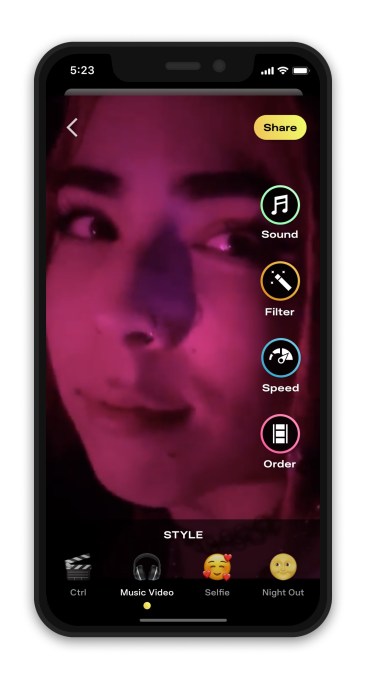Facilities management looks to be having a bit of a moment, amid the coronavirus pandemic.
VergeSense, a U.S. startup that sells a “sensor as a system” platform targeted at offices — supporting features such as real-time occupant counts and foot-traffic-triggered cleaning notifications — has closed a $9 million strategic investment led by Allegion Ventures, a corporate VC fund of security giant Allegion.
JLL Spark, Metaprop, Y Combinator, Pathbreaker Ventures and West Ventures also participated in the round, which brings the total funding raised by the 2017-founded startup to $10.6 million, including an earlier seed round.
VergeSense tells TechCrunch it’s seen accelerated demand in recent weeks as office owners and managers try to figure out how to make workspaces safe in the age of COVID-19 — claiming bookings are “on track” to be up 500% quarter over quarter. (Though it admits business did also take a hit earlier in the year, saying there was “aftershock” once the coronavirus hit.)
So while, prior to the pandemic, VergeSense customers likely wanted to encourage so called “workplace collisions” — i.e. close encounters between office staff in the hopes of encouraging idea sharing and collaboration — right now the opposite is the case, with social distancing and looming limits on room occupancy rates looking like a must-have for any reopening offices.
Luckily for VergeSense, its machine learning platform and sensor-packed hardware can derive useful measurements just the same.
It has worked with customers to come up with relevant features, such as a new Social Distancing Score and daily occupancy reports. It already had a Smart Cleaning Planner feature, which it reckons will now be in high demand. It also envisages customers being able to plug into its open API to power features in their own office apps that could help to reassure staff it’s okay to come back in to work, such as indicating quiet zones or times where there are fewer office occupants on site.
Of course plenty of offices may remain closed for some considerable time or even for good — Twitter, for example, has told staff they can work remotely forever — with home working a viable job for much office work. But VergeSense and its investors believe the office will prevail in some form, but with smart sensor tech that can (for example) detect the distance between people becoming a basic requirement.
“I think it’s going to be less overall office space,” says VergeSense co-founder Dan Ryan, discussing how he sees the office being changed by COVID-19. “A lot of customers are rethinking the need to have tonnes of smaller, regional offices. They’re thinking about still maintaining their big hubs, but maybe what those hubs actually look like is different.
“Maybe post-COVID, instead of people coming into the office five days a week… for people that don’t necessarily need to be in the office to do their work everyday maybe three days a week or two days a week. And that probably means a different type of office, right. Different layout, different type of desks etc.”
“That trend was already in motion, but a lot of companies were reluctant to experiment with remote work because they weren’t sure about the impact on productivity and that sort of thing, there was a lot of cultural friction associated with that. But now we all got thrust into that simultaneously and it’s happening all at once — and we think that’s going to stick,” he adds. “We’ve heard that feedback consistently from basically all of our customers.”
“A lot of our existing customers are pulling forward adoption of the product. Usually the way we roll out is customers will do a couple of buildings to get started and it’ll be phased rollout plan from there. But now that the use-case for this data is more connected to safety and compliance, with COVID-19, around occupancy management — there’s CDC guidelines [related to building occupancy levels] — now to have a tool that can measure and report against that is viewed as more of a mission-critical type thing.”
VergeSense is processing some 6 million sensor reports per day at this point for nearly 70 customers, including 40 FORTUNE 1000 companies. In total it says it provides its sensor hardware plus SaaS across 20 million square feet in 250 office buildings in 15 countries.
“There’s an extreme bear case here — that the office is going to disappear,” Ryan adds. “That’s something that we don’t see happening because the office does have a purpose, rooted in — primarily — human social interaction and physical collaboration.
“As much as we love Zoom and the efficiency of that, there is a lot that gets lost without that physical collaboration, connection, all the social elements that are built around work.”
VergeSense’s new funding will go on scaling up to meet the increased demand it’s seeing due to COVID and for scaling its software analytics platform.
It’s also going to be spending on product development, per Ryan, with alternative sensor hardware form factors in the works — including “smaller, better, faster” sensor hardware and “some additional data feeds.”
“Right now it’s primarily people counting, but there’s a lot of interest in other data about the built environment beyond that — more environmental types of stuff,” he says of the additional data feeds it’s looking to add. “We’re more interested in other types of ambient data about the environment. What’s the air quality on this floor? Temperature, humidity. General environmental data that’s getting even more interest frankly from customers now.
“There is a fair amount of interest in wellness of buildings. Historically that’s been more of a nice to have thing. But now there’s huge interest in what is the air quality of this space — are the environmental conditions appropriate? I think the expectations from employees are going to be much higher. When you walk into an office building you want the air to be good, you want it to look nicer — and that’s why I think the acceleration [of smart spaces], that’s a trend that was already in motion but people are going to double down and want it to accelerate even faster.”
Commenting on the funding in a statement, Rob Martens, president of Allegion Ventures, added: “In the midst of a world crisis, [the VergeSense team] have quickly positioned themselves to help senior business leaders ensure safer workspaces through social distancing, while at the same time still driving productivity, engagement and cost efficiency. VergeSense is on the leading edge of creating data-driven workspaces when it matters most to the global business community and their employees.”


https://ift.tt/39TsSCL VergeSense grabs $9M for its people-counting sensor tech as offices eye COVID changes https://ift.tt/3g9Xaou























